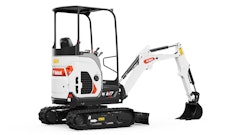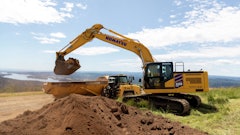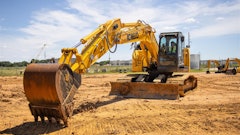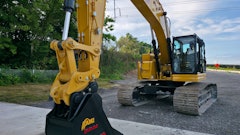Check out the video right here:
A couple of weeks back John Deere and Hitachi made a very big announcement regarding excavators.
After more than three decades of building excavators through a joint venture, the two have decided to dissolve the partnership and go their separate ways.
But—as is the case with the end of any relationship that goes back this far and has been so integral to the success of both companies within a given market—this dissolution won’t be a clean break.
It's not that it's going to be messy—far from it. It’s just that the nature of the Deere-Hitachi joint venture was such that each company’s respective strengths were so deeply integrated and the work toward the success the companies found was so equally shared that untangling this ball of yarn will take time.
But why are they untangling to begin with? How will customers and their machines be impacted? A lot of it boils down to the growing importance of distribution in the equipment market.
Long history of collaboration
Before we get into the why and other questions, let’s nail down exactly what this relationship was. Or, what this relationship still is until March of 2022.
Though the formal joint venture between Deere and Hitachi started in the late 80s, the two companies’ working relationship actually stretches back to the 1960s. At that time, the two collaborated through a supply agreement that saw Deere manufacturing undercarriage components for Hitachi excavators, while Hitachi made hydraulic components for Deere excavators.
In 1983, the companies entered a new supply agreement for excavators that saw Hitachi making whole machines bearing the Deere branding. Five years later, 1988, the companies officially joined forces as Deere-Hitachi, a joint venture that combined Hitachi’s excavator design and technology with Deere’s customer support, parts, dealer network and—maybe most importantly—the then 150-year-old Deere brand.
Both companies split ownership of the JV 50/50 and over the years established three manufacturing facilities: the headquarters in Kernersville, North Carolina; another focused on forestry machines in Langley, British Columbia; and a third in Brazil serving as the manufacturing base for South American customers.
Today, the operation is responsible for the manufacturing of 13-47 metric ton excavators bearing both the Deere and Hitachi brands sold throughout North and South America. Most of the machines are built within the three facilities we just mentioned, but others are built in Japan and imported to the Americas.
Over the course of the next 30 years, the joint venture netted growth in excavator market share for both companies and became one of the world’s largest manufacturers of excavators. But beyond that, it reduced logistics costs for both parties and enabled them to more quickly respond to the demands of the market.
In other words, this thing did exactly what it was designed to do. Deere got a great lineup of excavators, and Hitachi made huge inroads with customers here.
Why the JV is splitting
So, if it’s been going so well, why are they dissolving the joint venture?
Maybe the word “inevitable” is too strong in this case, but given the trajectories and aspirations of both companies, this arrangement was never going to last forever.
Both companies have acknowledged that. Both have gone on the record saying that the dissolution is mutual decision. In fact, in a recent conversation I had with Deere Construction and Forestry VP Domenic Ruccolo, he told me that the companies see this as a natural evolution of their relationship.
Ruccolo’s description makes a lot of sense when you step back and think about how Deere’s Construction and Forestry Division has changed here in the last five years—specifically the momentum behind that division.
Since the Construction & Forestry Division’s inception as Deere Industrial in 1956, it has competed for attention not just within the construction market against larger players like Caterpillar, but even within their own company. Farming and Turf equipment and green tractors are primarily what Deere is known for and that will likely never change.
But the gap—not just between Deere’s construction and Ag divisions, but between Deere and global equipment rival Caterpillar—is closing.
And that’s largely thanks to Deere’s $5 billion acquisition of the Wirtgen Group in 2017. Not only did it greatly expand Deere’s reach in construction, it added a very healthy bump to the company’s annual sales figures.
In 2016, before Deere bought Wirtgen, the company’s Equipment Operations—what you get when you combine both its Construction and Ag businesses—reported $23 billion in sales and revenues, with Construction equipment contributing just under $5 billion of that revenue.
In 2018, the first full fiscal year following the 2017 Wirtgen acquisition, Deere’s equipment sales and revenue saw an immediate $3 billion boost thanks to the deal. Those equipment sales then grew to just under $35 billion in fiscal year 2019—the last non-Covid year—with Construction and Forestry accounting for $11 billion of that revenue.
Those sales numbers push Deere into solid standing as the second largest equipment maker in the world—and made narrower the gap between the company and Caterpillar.
With that momentum in mind, Deere has no plans on slowing down. The company appears to have eyes set on seriously challenging Cat’s global equipment dominance and to that end are excited about the opportunity of having full control over the design and development of their excavator lineup from here on out. Plus, they have all sorts of confidence in what they’ve learned from Hitachi and their ability to continue building those co-developed excavators.
Hitachi is ready for more
In the same way Deere is excited to continue its growth and have full control over its excavator lineup, Hitachi is ready for some growth of its own.
In a statement as part of the company’s announcement of the JV dissolution, the CEO of Hitachi Construction Machinery Loaders Americas—that’s the company that currently makes Hitachi wheel loaders—said the dissolution of the venture with Deere will allow Hitachi to “better determine its destiny in the Americas.”
In fact, Hitachi has been preparing for the split since 2017. And there’s good reason.
As part of this deal, Hitachi will lose its entire excavator manufacturing footprint in the Americas. That’s because Deere is purchasing all three facilities currently run under the Deere-Hitachi joint venture. Hitachi is also losing the majority of its excavator dealer footprint as well since Deere’s distribution network will no longer carry Hitachi machines.
Hitachi says it will manufacture all of its machines—excavators, loaders and new mining equipment—in Japan and import into the Americas for the foreseeable future. As for distribution? Here in the U.S. at least, that will fall to Hitachi’s roughly 60 or so dealers that currently only offer loaders.
While that sounds like a lot of ground to make up, the work of building that brand to a higher status in the Americas is what Hitachi is so excited about. In a recent conversation, Quinn told me that Hitachi wants to elevate the brand here in the Americas to the same position Hitachi enjoys elsewhere in the world.
Hitachi feels that requires direct interaction and collaboration with dealers and customers—something the brand currently doesn’t have with the joint venture with Deere.
Timing
But why now? What is it about 2021 that makes this the right time for Hitachi to move on?
Quinn told me that when the Deere JV was established 30 years ago, the primary focus was the manufacturing—building a good, solid product. Today though? Things are different—selling machines is a bit more complicated now than it was back then.
Today, the primary focus is long-term customer satisfaction. And while building long-lasting quality machines is key to that, so is distribution and the value chain—parts, service, rental and used sales.
Plus, in the last four years, Hitachi wheel loaders have more than doubled in market share here in North America. Hitachi attributes that success—and its longstanding success as one of the top excavator manufacturers worldwide—to the direct contact it has with its dealers and loader customers.
With that formula for success in had, Hitachi feels like it can extend that strategy to excavators and mining equipment. So much so, following the dissolution of Deere-Hitachi at the end of February 2022, Hitachi is promising to quickly thereafter launch new machines and new technologies through a “revamped and strengthened distribution network.”
Moving forward, Hitachi sees its path to success here being uptime, better technology—fleet-wide tech integration specifically—expanded rental and expanded used equipment purchasing options.
Customer impact
Now, we’ve spent a lot of time talking about the business decisions and other motivations that went into this move, but what about the machines? How will this move impact the equipment?
In the short term? Not very much.
I mentioned earlier that Deere is purchasing the three Deere-Hitachi facilities to continue manufacturing excavators. But how does it plan on keeping those facilities going once Hitachi stops providing designs and technology?
Even though the joint venture will end, Deere and Hitachi are going to stay in touch. That’s thanks to a new license and supply agreement in which Hitachi will license its designs and kits to Deere who will then continue manufacturing the current Deere-branded excavator lineup.
Plus, quite a few Deere models currently manufactured in Japan by Hitachi—including Deere’s compact excavators, reduced tail-swing excavators, wheeled excavators and larger machines like the 670 and 870—will continue to be manufactured by Hitachi under this licensing agreement. If and when those machines ever make it stateside for manufacture hasn’t yet been decided.
The main difference here? Deere will no longer churn out, orange, Hitachi-branded machines at these facilities. Those will move to Japan.
Where it really gets interesting is when you look long-term. Deere is just as excited as Hitachi is for this newfound independence.
For one, the deeper integration of its technology and customer feedback—Deere is very big on voice of customer in their design phase—Deere is excited to expand that same degree of integration of both of those elements that goes into other machines fully designed by Deere, into its excavators moving forward.
Another interesting aspect of this dissolution is that future technology and the strategy surrounding those technologies were mentioned by both companies as to why this is happening. What those technologies are specifically, we don’t know yet. An easy guess is something having to do with tighter fleet management, control commonalities and the ever growing importance of electronics on machines of all types.
So, like I said, this breakup is not messy. Actually, it’s very methodical. And kind of inspiring in a way. Thirty years ago, two companies acknowledged their weaknesses, banded together to build something greater than their individual parts and it worked.
Now, they’re acknowledging that things have changed and even as they part ways, they’re doing so gracefully and with a grateful eye on the help they provided one another along the way. It will be interesting to see what the future holds for both.



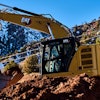
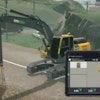
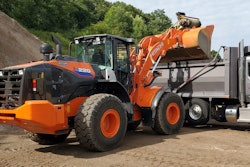

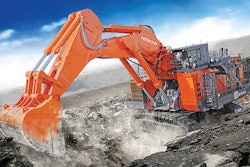






![Hcm Ax Landcros Dual Branded Logo[25]](https://img.forconstructionpros.com/mindful/acbm/workspaces/default/uploads/2025/11/hcmaxlandcros-dual-branded-logo25.Qhg3vUCjoK.jpg?ar=16%3A9&auto=format%2Ccompress&bg=fff&fill-color=fff&fit=fill&h=135&q=70&w=240)
